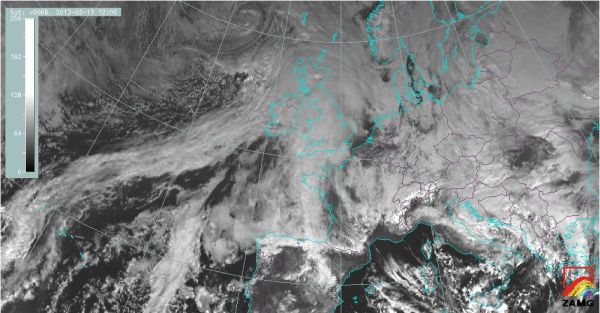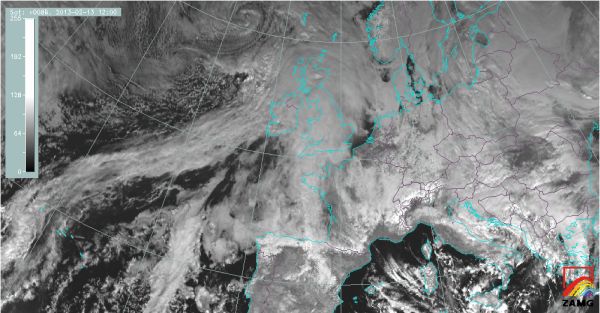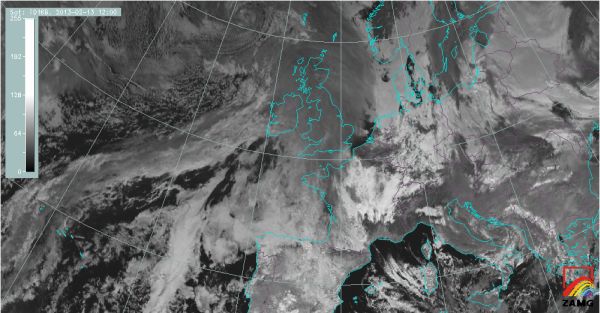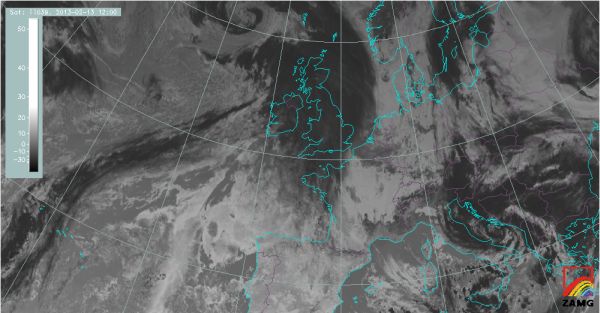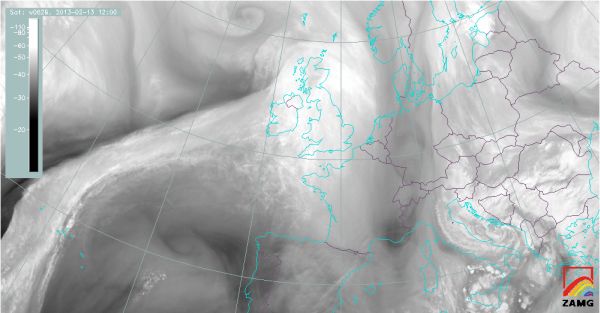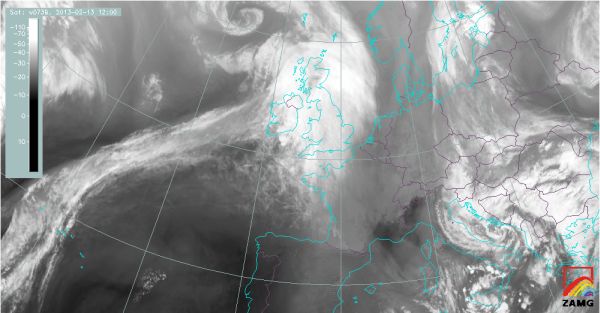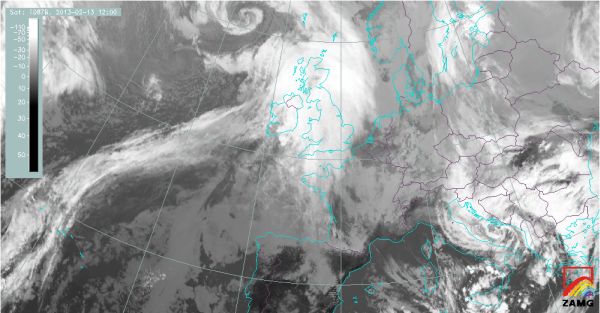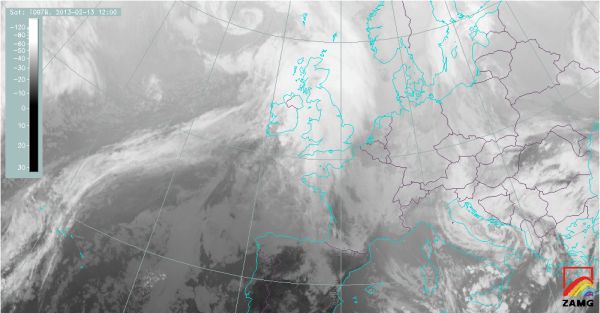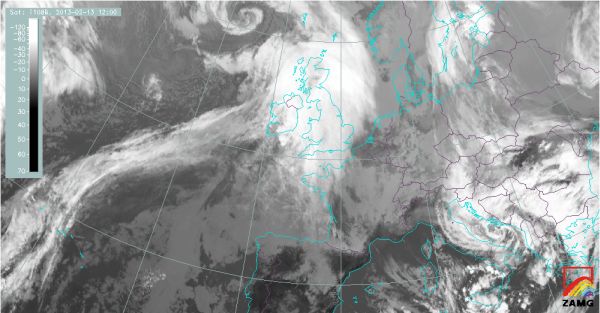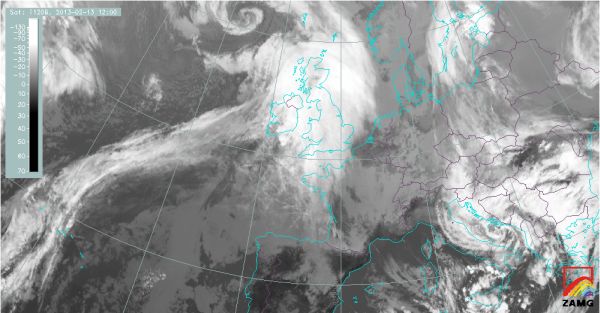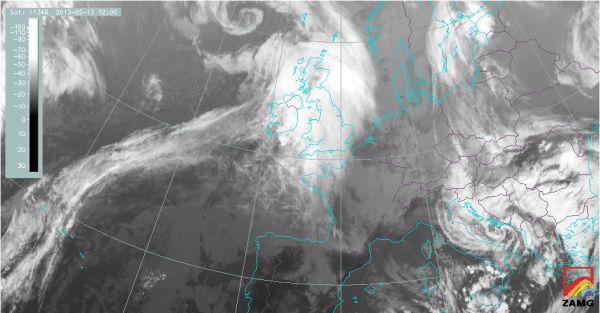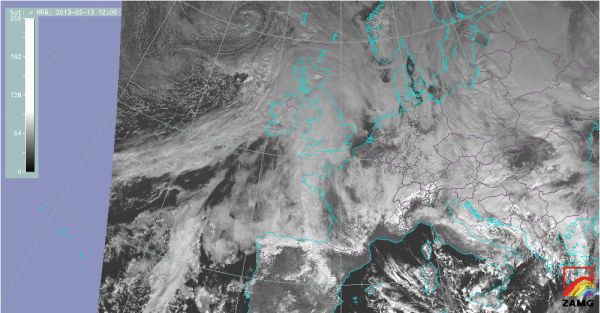Table of channels, their applications and image examples
Table 2: channel number, central wavelenght, characteristics and typical applications, Abbreviations: VIS: visible, IR: infrared, NIR: near IR, MIR: middle IR, WV: Water Vapour
The fourth column of the table lists the RGB (Red-Green-Blue) combinations of different channels in which the respective channels are used. The RGB's are discussed in detail in the next chapter.
| Channel number | Central wave length | Additional characterization | Typical application areas |
|---|---|---|---|
| 01 | 0,6 µm | VIS: window
Gray shades represent: different values of albedo |
|
| Channel number | Central wave length | Additional characterization | Typical application areas |
|---|---|---|---|
| 02 | 0,8 µm | VIS: window
Gray shades represent: different values of albedo; high sensitivity for soil and vegetation |
|
| Channel number | Central wave length | Additional characterization | Typical application areas |
|---|---|---|---|
| 03 | 1,6 µm | NIR: window
Gray shades represent: different values of albedo; different reflectivity of ice and water clouds |
|
| Channel number | Central wave length | Additional characterization | Typical application areas |
|---|---|---|---|
| 04 | 3,9 µm | IR
Gray shades represent:
|
|
| Channel number | Central wave length | Additional characterization | Typical application areas |
|---|---|---|---|
| 05 | 6,2 µm | WV Absorption band
Gray shades represent: Different WV content in high layers |
Channel regularly used in SatManu |
| Channel number | Central wave length | Additional characterization | Typical application areas |
|---|---|---|---|
| 06 | 7,3 µm | WV Absorption band
Gray shades represent: The amount of WV in high and middle layers |
|
| Channel number | Central wave length | Additional characterization | Typical application areas |
|---|---|---|---|
| 07 | 8,7 µm | IR
Gray shades represent: Surface/cloud top temperatures; sensitivity to high, thin Cirrus |
|
| Channel number | Central wave length | Additional characterization | Typical application areas |
|---|---|---|---|
| 08 | 9,7 µm | Ozone Absorption band
Gray shades represent: Surface/cloud top temperatures; Sensitivity to ozone content |
|
| Channel number | Central wave length | Additional characterization | Typical application areas |
|---|---|---|---|
| 09 | 10,8 µm | IR
Gray shades represent: Surface/cloud top temperatures; |
Channel regularly used in SatManu |
| Channel number | Central wave length | Additional characterization | Typical application areas |
|---|---|---|---|
| 10 | 12 µm | IR
Gray shades represent: Surface/cloud top temperatures; sensitivity to high thin Cirrus |
|
| Channel number | Central wave length | Additional characterization | Typical application areas |
|---|---|---|---|
| 11 | 13,4 µm | CO2 absorption band
Gray shades represent: Surface/cloud top temperatures; sensitivity to CO2 absorption |
|
| Channel number | Central wave length | Additional characterization | Typical application areas |
|---|---|---|---|
| 12 | Broad band: 0,3 - 1 µm | High resolution Visible
Resolution at nadir = 1 km Gray shades represent: Different values of albedo |
|
